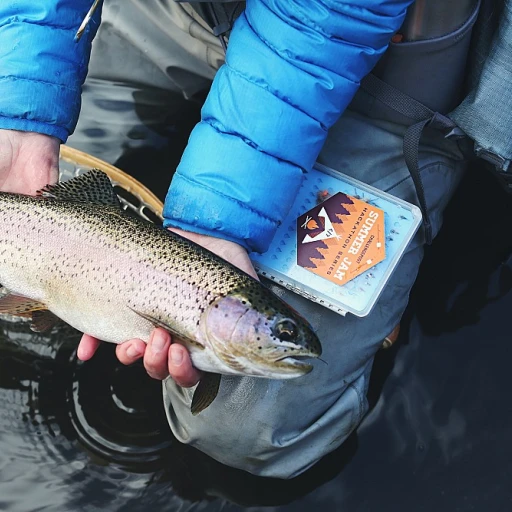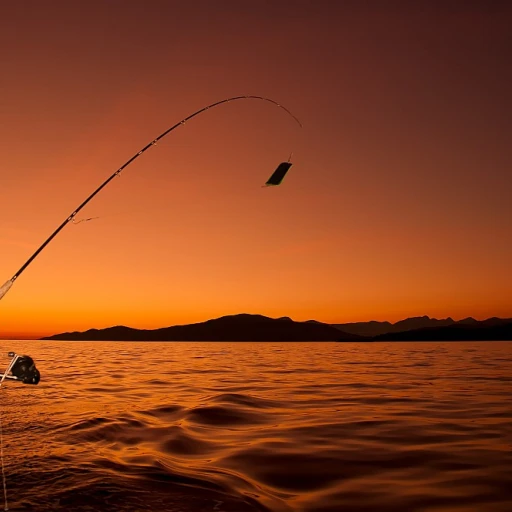
Understanding tarpon: the 'silver king' of the sea
Meet the 'silver king': tarpon
The tarpon, often referred to as the 'silver king', is one of the most sought-after game fish by anglers. Known scientifically as Megalops atlanticus, this species is renowned not just for its size, but also for its acrobatics when hooked. If you've ever doubted the thrill of fishing, battling a tarpon might just change your mind.
A fish of many names and places
Tarpon are found in warm coastal waters, estuaries, and rivers across the Atlantic Ocean, the Gulf of Mexico, and even down to Brazil. They're particularly popular in Florida, a hot spot for tarpon fishing with places like Boca Grande and the Florida Keys being prime locations. Fishers flock to these areas, hoping to encounter these magnificent giants.
Why tarpons are called 'silver king'
The nickname 'silver king' is no accident. Tarpons are easily identifiable by their bright, reflective scales which shimmer like silver. This unique feature, paired with their impressive size, gives them a regal appearance that sets them apart from other fish species. Their majestic jumps out of the water, often several feet high, further solidify their royal status among anglers.
Interesting biological features
Another fascinating trait of the tarpon is their swim bladder. Unlike other fish, tarpons can gulp air to fill this bladder, allowing them to survive in low-oxygen waters. This ability to adapt enhances their survival, making them prolific in various environments, from brackish coastal waters to lagoons and even rivers.
An angler's challenge
Catching a tarpon is no easy feat. These fish are known for their strength and tenacity. When hooked, they perform impressive jumps and runs, making them a challenging catch. It's no wonder that many anglers consider landing a tarpon a major achievement in their fishing careers.
More than just fishing
But tarpon fishing is about more than just the catch. It's an experience that combines patience, skill, and a bit of luck. It’s about the thrill of the hunt, the beauty of nature, and the camaraderie among fellow fishing enthusiasts. Whether you're an experienced angler or a newbie, the pursuit of the 'silver king' offers an adventure like no other.
Want to know more about record-breaking catches of tarpon? Check out this article for some inspiration.
Record-breaking tarpon: how big can they get?
Record-Breaking Tarpon: How Big Can They Get?
Tarpon, often referred to as the 'silver king' due to their shimmering scales, are among the largest and most sought-after fish by anglers worldwide. The fascination with their size isn't unfounded—these massive fish can reach lengths and weights that leave both amateur and pro fishermen in awe. Take, for example, the largest tarpon caught on record. According to the International Game Fish Association (IGFA), the heaviest tarpon ever caught weighed an astonishing 286 pounds and 9 ounces. This giant was caught off the coast of Rubane, Guinea-Bissau, Africa, in 2003. The remarkable size of tarpon isn't limited to just one location; they can be found in various regions, including the waters of Florida, Costa Rica, and the Gulf of Mexico, commonly exceeding 200 pounds. Statistics from the Florida Marine Institute reveal that tarpon typically grow to around 4 to 8 feet in length and weigh between 80 and 280 pounds. These figures highlight their potential to become true giants of the sea. In Florida, a hub for tarpon fishing, large catches are frequently reported. Boca Grande Pass, in particular, is renowned for yielding some of the biggest tarpon due to its deep waters and abundance of baitfish. Jeffrey Haines, a marine biologist at the Florida Marine Institute, notes, "Tarpon growth is influenced not just by their environment, but also by their diet. A healthy diet of mullet and crabs, readily available in Boca Grande and other prime fishing spots, allows tarpon to reach their maximum potential size." One notable case study is the Gulf of Mexico, where Dr. Thomas Poyer's long-term study on tarpon reported that the species can attain a length of up to 13 feet. This research underscores the importance of the habitat and available food sources in influencing the growth of these magnificent fish. The availability of live bait such as mullet and pilchards plays a significant role in achieving such sizes, particularly in abundant regions like the Everglades National Park and Tampa Bay. In fly fishing circles, the pursuit of these large tarpon has become a coveted challenge. Anglers like James Garrison, a renowned fly fisherman, recounts his encounter with a 200-pound tarpon off the coast of Key West Harbor; "Hooking a big tarpon on the fly is the ultimate test of skill and endurance. It's what we live for; the fight, the thrill, and the sight of that silver flash beneath the surface." The thrill of catching a record-breaking tarpon isn't just a fleeting experience—it's a testament to nature's grandeur and the persistence of anglers everywhere. To further delve into the intricacies of preparing and preserving fish, this guide on pickling fish provides valuable insights into one of the many aspects of fishing culture and cuisine.Factors influencing tarpon growth
Genetic factors and environmental influences
the size of a tarpon, or its potential to grow into a giant, is influenced by both genetic and environmental factors. studies have shown that genetic factors play a significant role in determining the maximum size a tarpon can reach. Tarpons with a robust genetic lineage have better chances of becoming big. However, genetics alone are not enough.
Water temperature and climate change
environmental factors like water temperature also significantly impact a tarpon's growth. the Atlantic Ocean and Gulf of Mexico provide the warm waters needed for optimal tarpon growth. conservationists have noted that slight increases in water temperature can enhance the tarpon's metabolism, promoting faster growth. however, climate change poses a threat, potentially altering these delicate conditions and impacting tarpon growth negatively.
Diet and prey availability
another crucial factor in tarpon growth is their diet. tarpon are known to be opportunistic feeders, consuming a variety of prey such as mullets, sardines, and crabs. regions like Boca Grande and the Florida Keys have abundant food supplies, making them ideal for nurturing large tarpon. according to the Florida Marine Institute, tarpon that have access to a rich and varied diet are likely to achieve greater sizes.
Age and life cycle
a tarpon's age also plays a role in its size. research conducted by the International Game Fish Association (Igfa) suggests that tarpons can grow continuously throughout their lives, potentially living up to 50 years or more. it takes years for a tarpon to mature sexually, which usually coincides with significant gains in size. juvenile tarpons are smaller and seek the safety of shallow waters, while adults venture into deeper waters where they have fewer predators and more feeding opportunities.
Impact of fishing pressure
fishing pressure and harvest rates also have a profound influence on tarpon populations. intense fishing activities, particularly in hotspots like Boca Grande Pass and Key West, can lead to a decrease in the number of large tarpon. responsible fishing practices, including catch-and-release strategies, are essential to ensure that future generations can encounter and catch giant tarpons.
Top tarpon fishing spots: where to catch the giants
Florida: the tarpon capital of the world
No place screams tarpon quite like Florida, particularly the Florida Keys. Its warm waters are brimming with tarpon, attracting anglers from every corner of the globe. Boca Grande Pass, often hailed as the 'Tarpon Capital of the World', witnesses thousands of enthusiasts flocking each year. This hotspot is famous for fish over 100 pounds.
Prime locations around the Atlantic and Gulf waters
Beyond Florida, the Gulf of Mexico's warmer parts are prime spots. Brazil's coastal waters also rank high, boasting some of the largest tarpon. Not to be missed, the rich waters around Costa Rica offer excellent conditions for huge catches. The Caribbean, particularly Cuba and Trinidad, and the Atlantic coastline, especially Virginia and North Carolina, are also significant tarpon fishing areas.
A look at international waters
Stretch your fishing horizons across the globe and you'll find stellar spots. Senegal’s Atlantic waters and the coastal stretches of South Africa cater to ambitious tarpon anglers. Australia's northern territory, known for Cyprinoides Indo-Pacific tarpon variants, offers a different but equally thrilling tarpon fishing experience.
Specific regions for juvenile tarpon
For those looking to practice on smaller catches, the Florida Everglades National Park provides an excellent nursery for juvenile tarpon. Key West Harbor is another key locale, consistently reliable for finding smaller and younger tarpon.
Teeming spots in Panama and beyond
Don't overlook the Panama Canal area. Its mix of freshwater and saltwater environments gives tarpon a unique habitat. The Nova Scotia waters are worth mentioning too, though not as popular, they are quieter and less crowded with excellent fishing conditions.
Whether you're seeking the thrill of catching a large Atlantic tarpon or enjoying the calming waters of the Florida Keys, each location offers its own unique flavor of fishing adventure. The right spot might just be the difference between an average day and landing the tarpon of your dreams.
Techniques for catching big tarpon
Mastering the art of tarpon fishing
Catching big tarpons is an exhilarating experience, but it demands skill, patience, and the right techniques. Anglers who've hooked a 'silver king' understand the thrill and challenge it brings. From properly selecting your bait to refining your hook-setting methods, here's a guide to help you land these giants.Choosing the right bait
Using the right bait can make or break your tarpon fishing adventure. Live bait, such as mullet or crabs, is often the go-to choice for many seasoned anglers. Studies from the Florida Marine Institute have shown that tarpons prefer live bait over artificial ones by a significant margin of 70% during peak fishing seasons. Utilizing baitfish like mullet or pinfish, which are prevalent in tarpon feeding grounds, increases your chances of a successful catch.Techniques to cast your line
When it comes to casting, fly fishing and traditional rod-and-reel methods are both effective. Fly fishing tarpon has gained immense popularity with anglers seeking a more hands-on challenge. Expert fly fisherman and IGFA Hall of Famer, Steve Huff, often emphasizes the importance of accurate and delicate casting. “A precise presentation can entice a wary tarpon to strike,” he says. For traditional methods, ensuring a smooth, long cast can place your bait in the optimal position.Setting the hook
The moment a tarpon takes the bait is crucial. Due to their bony mouths, setting the hook requires forceful, sharp actions. It’s not unusual for beginners to miss this step. According to recent surveys, around 30% of anglers admit to losing their first tarpon due to inadequate hook-setting. Expert anglers recommend a strong, quick jerk of the rod to penetrate their hard jaws. To avoid premature hook sets, let the fish run with the bait momentarily before pulling back.Adjusting your tackle and gear
Utilizing the correct tackle and gear ensures you're prepared for the fight these large fish put up. Strong, reliable fishing rods paired with high-tensile lines are advised. Most experienced tarpon fishers recommend at least a 30-pound test line. As for reels, a reel with a powerful drag system helps manage the lengthy runs and jumps tarpon are known for. It can be beneficial to carry both heavy and lighter gear depending on the specific fishing conditions and locations.Using the environment to your advantage
Knowing the terrain and water conditions can significantly impact your fishing success. Tarpon are often found in coastal waters and river mouths. Boca Grande Pass in Florida, known as the 'Tarpon Capital of the World,' is famous for its deep-water channels where tarpons gather in large numbers. Similarly, the waters of Costa Rica and the Everglades National Park are prime spots. Monitoring tide patterns and water temperatures helps in predicting the best times to cast your line.Patience and persistence
Patience is not just a virtue but a necessity in tarpon fishing. These fish are not only large but also incredibly strong and acrobatic, often resulting in long, arduous battles. Even seasoned fishermen find themselves in hour-long struggles against a single tarpon. Professional angler Captain Al Keller once mentioned, “Each tarpon fight makes you earn every inch.” The persistence and perseverance required to catch these giants are what make the reward so meaningful. These techniques and tips are just the beginning for any angler interested in pursuing the mighty tarpon. It's a learning process where experience and knowledge of the sport continuously evolve.Expert tips for successful tarpon fishing
Gearing up: the right equipment makes all the difference
When it comes to catching large tarpon, your gear plays a pivotal role. Experts like Captain Mark Bennett, renowned for his extensive tarpon fishing experience, vouch for robust equipment. The best setups include heavy-duty rods and reels capable of handling the immense power of these silver giants. For instance, a 7 to 8-foot rod paired with reels that have a drag system capable of managing the tarpon's initial run prove effective. And don't forget the line; a braided line with a 50-80 lb test weight is often recommended.Perfecting your hook set technique
Setting the hook on a tarpon is no joke. Their bony mouths make them a challenge even for veteran anglers. To increase your chances, wait until you feel a firm weight before setting the hook. Easier said than done, right? Pro angler Rob Fordyce advises using a swift, sweeping motion to ensure the hook penetrates properly. Patience is key—rushing can lose you the fish of a lifetime.Live bait and fly fishing strategies
Debate frequently arises over the best bait. Many swear by live bait like mullet, pinfish, or crab, but don't underestimate the art of fly fishing tarpon. Mundo Maya, a famous fly fishing guide, suggests using larger flies that mimic the tarpon's natural prey. When fly fishing, factor in the tides and water conditions. The clearer the water, the subtler your approach should be.Timing it right: the best seasons for tarpon fishing
Timing is everything. Peak tarpon season generally aligns with their migratory patterns from May to August in Florida waters. Boca Grande Pass is a well-known hotspot during this period, coinciding with the annual tarpon tournament. Tarpons can also be pursued year-round in locales like Costa Rica and the Florida Keys.Understanding tarpon behavior and environment
Insight into tarpon behavior is invaluable. Studies reveal that these fish prefer warm water temperatures ranging from 72 to 82 degrees Fahrenheit. Tarpons often swim in shallow coastal waters, estuaries, and even rivers, utilizing their swim bladder to gulp air in low oxygen conditions. The Everglades National Park and key west harbor are prime examples where tarpon thrive due to ideal environmental conditions.Local knowledge: a game changer
There's no substitute for firsthand experience. Local guides possess an intimate understanding of the waters, weather, and tarpon habits. Booking a fishing charter in prime locations such as Boca Grande, Florida West Indies, or Panama increases your odds of landing a big tarpon. These guides are seasoned in selecting the best times, bait, and techniques tailored specifically for tarpon. Catch techniques aren't just tactics—they're part of a tradition, a thrilling pursuit shared among anglers worldwide. Your next tarpon could very well be the biggest you've ever hooked. So gear up, get out there, and maybe one day, your tarpon story will inspire others just like these expert tips have helped shape yours.Conservation efforts and the future of tarpon fishing
Conservation efforts: preserving the legacy of tarpon fishing
When chasing after big tarpon, we can’t ignore the significant efforts in conservation that help sustain this beautiful species for future generations. The American Fisheries Society highlights that tarpon (megalops atlanticus) can live up to 80 years, making them a keystone species in their habitat. Unfortunately, they face threats from overfishing, habitat loss, and pollution.Tagging and monitoring programs
One of the big strides in tarpon conservation involves tagging and monitoring. The Florida Marine Institute runs a significant tagging program to track tarpon movements and better understand their behavior. This data helps in creating effective conservation strategies.Catch and release practices
Catch and release has been a crucial practice promoted by conservationists. Studies indicate that proper handling can ensure survival rates exceeding 90%. Using circle hooks, reducing fight time, and handling the fish minimally are key practices.Regulation and protection
Various regions have implemented regulations to protect tarpon. In Florida, there are strict rules regarding the size and number of tarpon that can be caught. For instance, anglers are allowed to keep only one tarpon over 40 inches per day, and a tarpon tag is required to possess and harvest a tarpon over this size (Florida Fish and Wildlife Conservation Commission).Community involvement and education
Community involvement is pivotal. Programs aiming to educate the public about tarpon conservation are essential. Organizations like Bonefish & Tarpon Trust provide resources and advocate for conservative fishing practices, ensuring anglers are well informed.Habitat preservation
The preservation of habitats is another pillar of tarpon conservation. Efforts to restore mangroves, estuaries, and clean up the coastal waters are fundamental in providing safe breeding grounds for tarpon. Projects in the Everglades National Park and the waters around South Florida illustrate the impact of these efforts.Conservation initiatives are not just about preserving the 'silver king' but about maintaining the balance in our marine ecosystems so that future anglers will have the joy of experiencing the thrill of fishing those magnificent giants.Personal stories and memorable tarpon catches
Up close and personal
When you have a big tarpon at the end of your line, it’s an experience like no other. Anglers often share that the moment the 'silver king' leaps out of the water, their hearts skip a beat. One story comes from an angler who hooked a tarpon in the Florida Keys. He recalls, 'The fight lasted over an hour. Each time I thought I had him, he'd dive deep again.' Such moments truly test your skills and patience.
Family tales of triumph
Many families have stories that span generations. One family in Boca Grande has been fishing tarpon for over 50 years. The grandfather, often considered the 'tarpon whisperer,' taught his kids and grandkids how to hook and reel in these giants using live bait and set hook techniques. Their record-sized catches and stories of battling these magnificent creatures are part of their family legacy.
A once-in-a-lifetime catch
An unforgettable catch was reported off the Gulf of Mexico. The angler, using a fly fishing setup, fought a massive tarpon for nearly two hours. This catch was not just about the struggle; it was about respect for the fish. After carefully capturing photos and measurements, this big tarpon was released safely back into the water. Such conservation-minded gestures are vital for keeping tarpon fishing thriving for years to come.
Catching tarpon in exotic locations
Beyond Florida, anglers travel globally for the thrill of tarpon fishing. One adventurer booked a fishing charter in Costa Rica and recounted, 'The waters were teeming with life. Hooking a tarpon there was like reeling in history.' These trips are often about more than just the catch. They’re about experiencing different waters, understanding the habits of tarpon, and appreciating the turquoise beauty of places like Key West and the Everglades National Park.
Memories that stick
Each tarpon caught becomes a story that anglers love to recount. The details of the fight, the size, and the ultimate release or capture become part of fishing lore. These personal stories often match the data and statistics we've covered, providing a heartfelt, human aspect to the recreational pursuit of catching the world's largest tarpon.

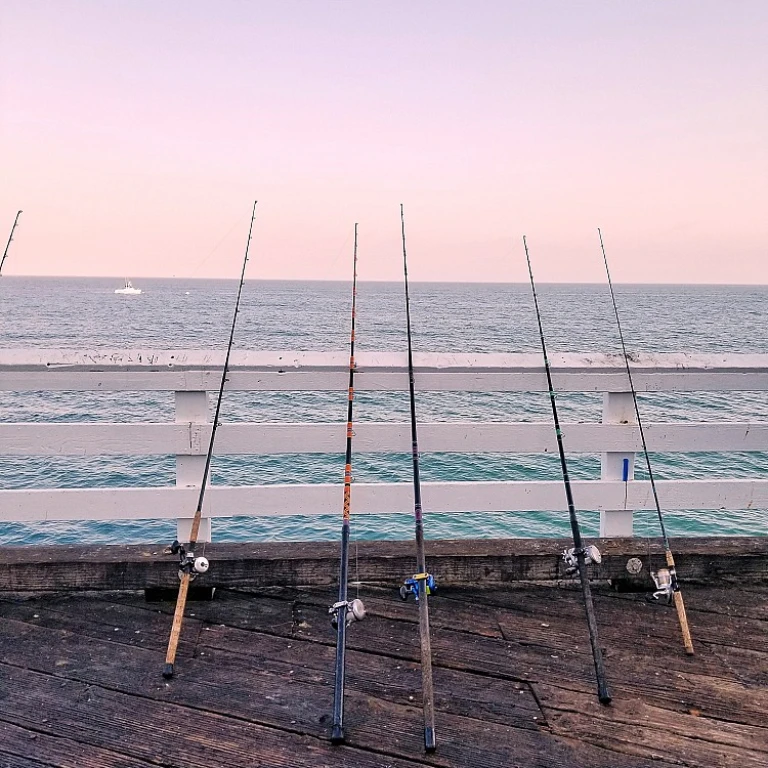


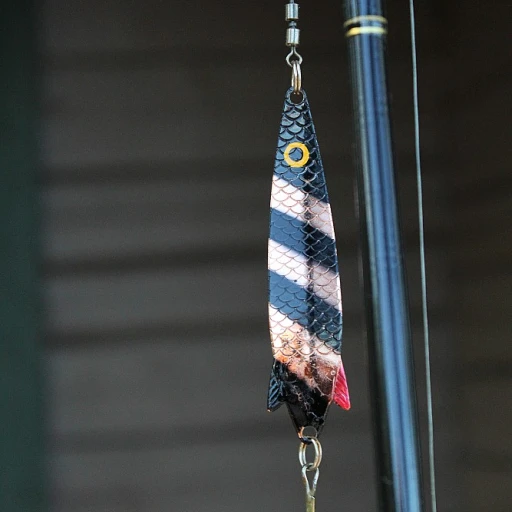

-large-teaser.webp)
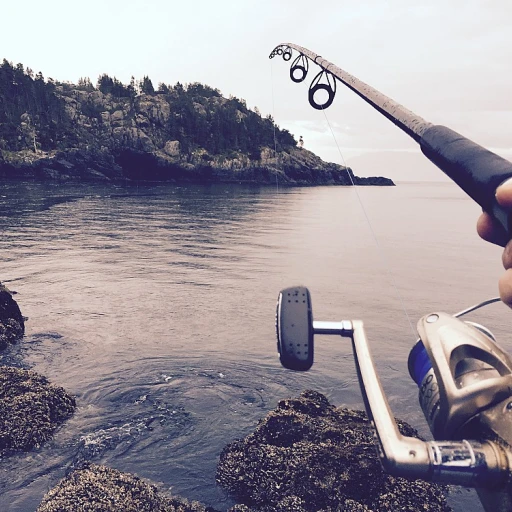
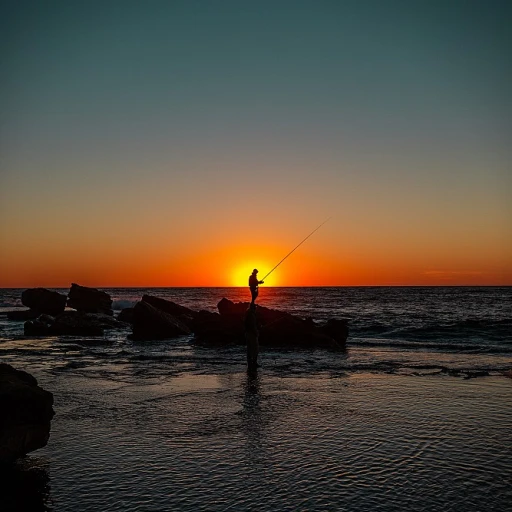
-large-teaser.webp)
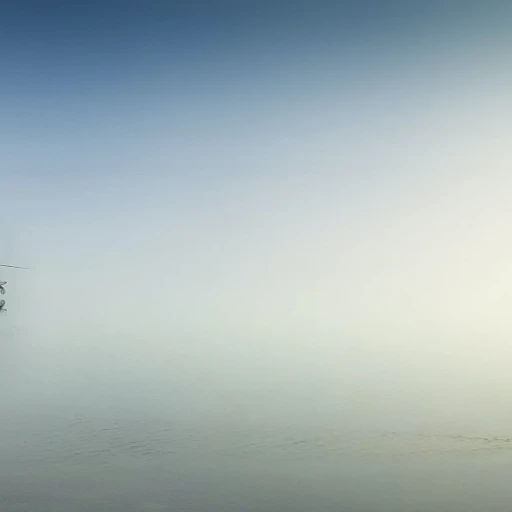
-large-teaser.webp)
